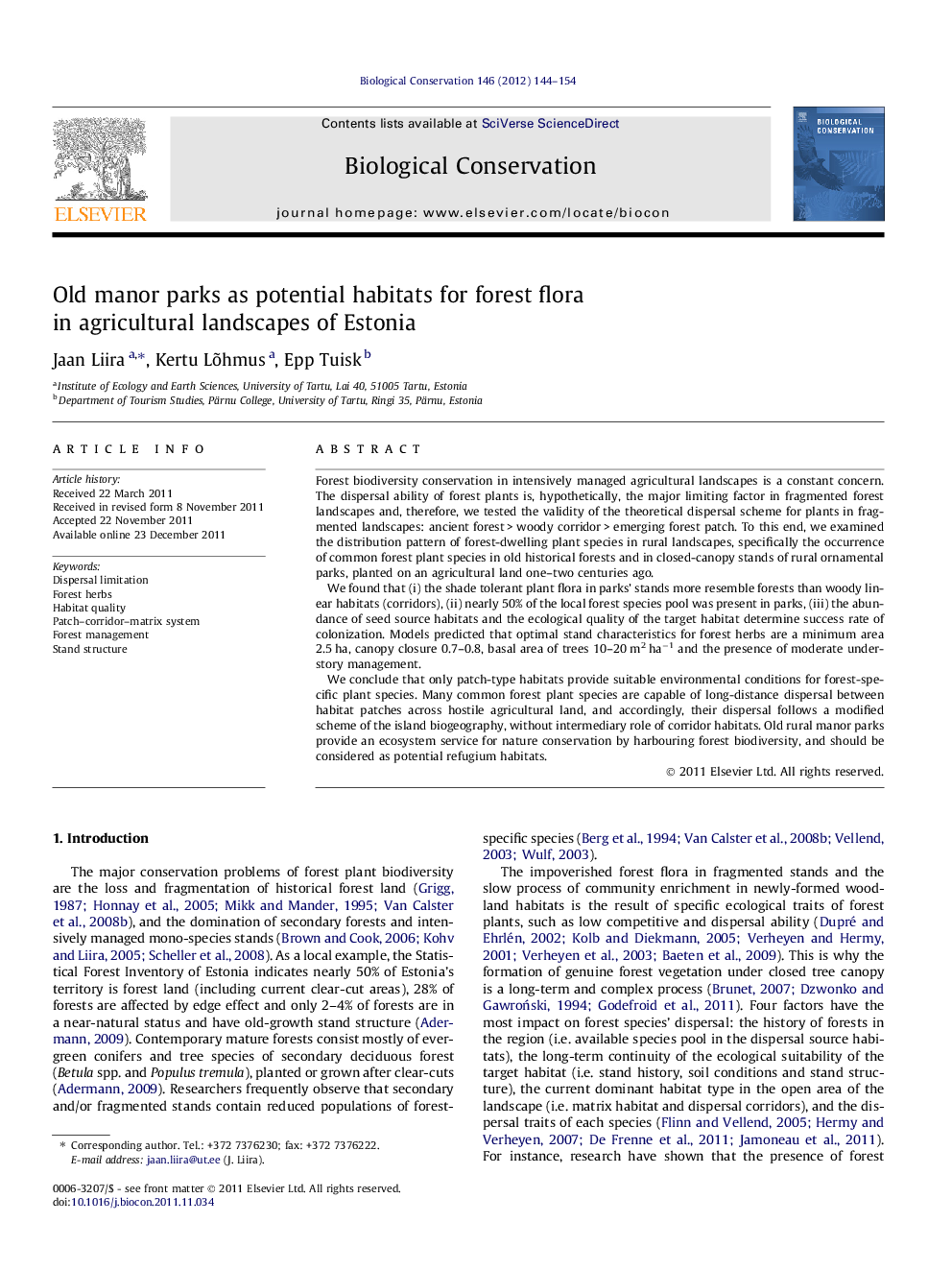| Article ID | Journal | Published Year | Pages | File Type |
|---|---|---|---|---|
| 4385475 | Biological Conservation | 2012 | 11 Pages |
Forest biodiversity conservation in intensively managed agricultural landscapes is a constant concern. The dispersal ability of forest plants is, hypothetically, the major limiting factor in fragmented forest landscapes and, therefore, we tested the validity of the theoretical dispersal scheme for plants in fragmented landscapes: ancient forest > woody corridor > emerging forest patch. To this end, we examined the distribution pattern of forest-dwelling plant species in rural landscapes, specifically the occurrence of common forest plant species in old historical forests and in closed-canopy stands of rural ornamental parks, planted on an agricultural land one–two centuries ago.We found that (i) the shade tolerant plant flora in parks’ stands more resemble forests than woody linear habitats (corridors), (ii) nearly 50% of the local forest species pool was present in parks, (iii) the abundance of seed source habitats and the ecological quality of the target habitat determine success rate of colonization. Models predicted that optimal stand characteristics for forest herbs are a minimum area 2.5 ha, canopy closure 0.7–0.8, basal area of trees 10–20 m2 ha−1 and the presence of moderate understory management.We conclude that only patch-type habitats provide suitable environmental conditions for forest-specific plant species. Many common forest plant species are capable of long-distance dispersal between habitat patches across hostile agricultural land, and accordingly, their dispersal follows a modified scheme of the island biogeography, without intermediary role of corridor habitats. Old rural manor parks provide an ecosystem service for nature conservation by harbouring forest biodiversity, and should be considered as potential refugium habitats.
► We studied forest-like stands in old rural parks in historic agricultural landscape. ► We found: park stands act as novel habitats harbouring forest biodiversity. ► Forest plant species are capable for long-distance dispersal. ► Habitat quality determines the species’ immigration success and prevalence. ► Corridor habitats do not function as substitution habitats for forest plant species.
